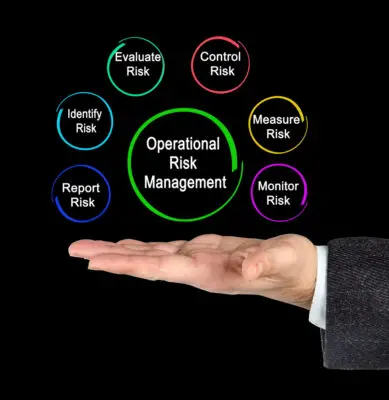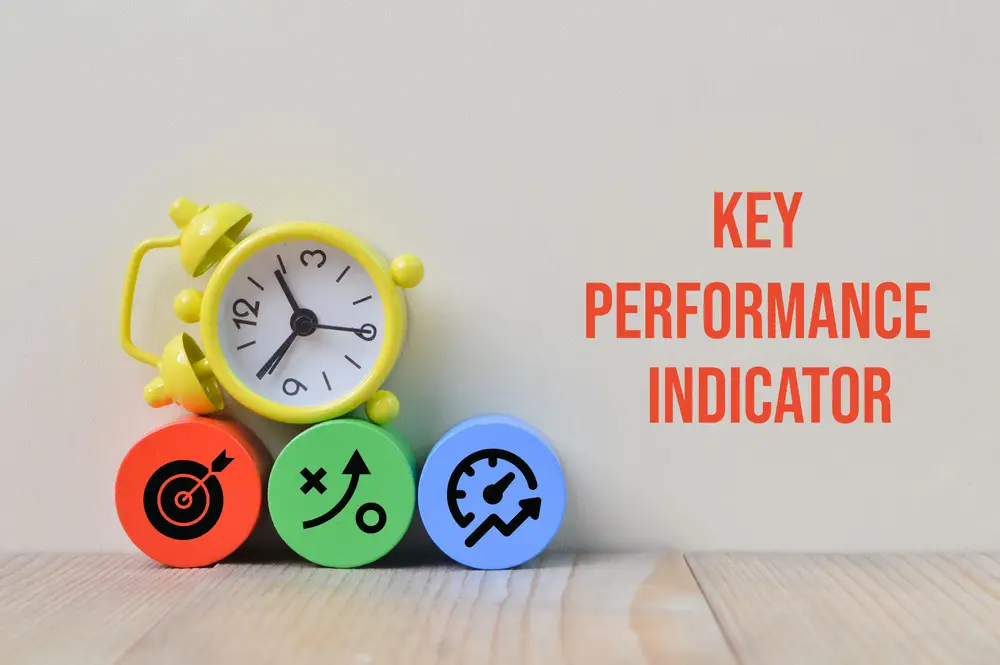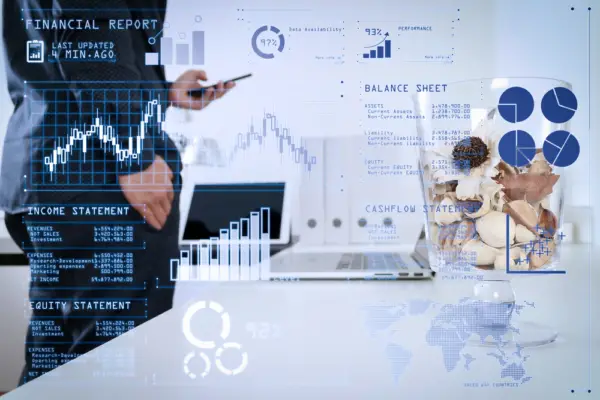Business owners recognize the importance of identifying and monitoring key risk indicators for their organizations. However, with numerous risk factors and indicators to consider, it can be challenging to know where to start. Key risk indicator examples provide tangible examples to apply to individual businesses.
Navigating the dynamic business environment requires staying ahead of potential risks to ensure organizational success. Beyond the Basics: Key Risk Indicators Examples for Improved Organizational Performance” delves deep into the world of key risk indicators (KRIs) to help manage and mitigate threats effectively.
Discover the importance of identifying and monitoring KRIs and learn how these valuable tools can strengthen risk management efforts. By examining real-world examples from various industries, gain a clear understanding of developing and applying KRIs tailored to an organization’s unique needs. This knowledge not only optimizes risk management strategies but also contributes to improved organizational performance.
Join us as we dive into the world of key risk indicators and provide actionable insights that transform risk management approaches. Embrace the opportunity to elevate risk management practices and give organizations a competitive edge in an ever-evolving business landscape. Uncover the power of KRIs to drive organizations towards a more secure and prosperous future.
In this post, we discuss key risk indicator examples that can enhance risk management practices. Covering a wide range of KPIs from financial metrics to strategic indicators, we offer a comprehensive view of an organization’s overall health and performance.
Examples of Key risk indicators
- Financial Key Risk Indicators: Track your organization’s financial performance and identify potential areas of financial risk with indicators like revenue growth, profit margins, and debt-to-equity ratio. Regularly tracking these financial KPIs enables staying on top of potential financial risks and making data-driven decisions to improve organizational financial health.
- Strategic Key Risk Indicators: Focusing on long-term performance, including goals, objectives, and growth, strategic KPIs include customer acquisition cost, customer lifetime value, and market share. Tracking these indicators helps identify potential opportunities, areas for growth, and risks impacting long-term success.
- Operational Key Risk Indicators: Monitoring day-to-day operations, such as supply chain management, production efficiency, and employee turnover, allows organizations to identify and mitigate potential operational risks and improve efficiencies.
- Compliance Key Risk Indicators: Ensure compliance with legal, regulatory, and ethical standards by monitoring compliance violations, employee training percentages, and compliance issue reporting time. Closely monitoring these indicators helps avoid potential legal issues and protect organizational reputation.
- Reputational Key Risk Indicators: Focusing on brand reputation and stakeholder perception, reputational KPIs include social media engagement, customer reviews, and employee satisfaction. Monitoring these KPIs maintains a positive reputation and identifies potential areas for improvement.
Financial Key Risk Indicators
Financial key risk indicators (KRIs) offer vital insights into an organization’s financial health and identify potential areas of financial risk. Regular monitoring and analysis of these indicators enable businesses to make data-driven decisions and implement effective strategies for growth and stability.
Revenue Growth and Profit Margins
Understanding financial performance and gauging profitability requires examining revenue growth and profit margins, fundamental financial KRIs.
Revenue growth measures the increase in an organization’s sales over a specific period, allowing businesses to evaluate the effectiveness of their sales and marketing strategies and identify trends and potential areas for growth.
Calculate revenue growth by comparing the current period’s revenue with that of the previous period and calculating the percentage change.
Profit margins indicate the percentage of revenue remaining as profit after accounting for all costs and expenses. Assessing profit margins enables organizations to evaluate their cost management and pricing strategies, ensuring optimal profitability. Calculate profit margins by dividing net income by revenue and multiplying the result by 100.
Consistently track and analyze both revenue growth and profit margins to identify trends, uncover potential risks, and make informed decisions to improve financial performance.
Debt-to-Equity Ratio
The debt-to-equity ratio, a critical financial KRI, measures an organization’s financial leverage by comparing its total debt to total equity. This ratio reveals how much debt an organization uses to finance its assets relative to the equity invested by shareholders.
A high debt-to-equity ratio may signal heavy reliance on external financing, posing potential risks such as increased interest expenses, reduced financial flexibility, and potential solvency issues. Conversely, a low debt-to-equity ratio may indicate a conservative approach to financing but could also suggest missed growth opportunities.
Calculate the debt-to-equity ratio by dividing an organization’s total liabilities by its total shareholders’ equity. Regularly monitor this ratio to maintain an optimal balance between debt and equity financing, ensuring the organization’s long-term financial stability.
Cash Flow Analysis
Cash flow analysis, an essential financial KRI, focuses on an organization’s ability to generate and manage cash. Adequate cash flow is crucial for meeting operational expenses, servicing debt, investing in growth opportunities, and maintaining overall financial stability.
Three primary components of cash flow analysis are:
- Operating cash flow: Reflecting the cash generated from an organization’s core business activities, such as sales revenue and payments from customers, minus operating expenses like wages and rent. Positive operating cash flow indicates that a business can generate enough cash to cover its operating expenses and invest in growth.
- Investing cash flow: This component tracks cash used for investing activities, such as purchasing or selling fixed assets like equipment and property. Analyzing investing cash flow helps organizations identify their capital expenditure patterns and assess the effectiveness of their investment strategies.
- Financing cash flow: Representing cash generated or used in financing activities, such as issuing or repaying debt, issuing or repurchasing shares, and paying dividends. Monitoring financing cash flow allows businesses to understand their capital structure and make informed decisions about their financing needs.
Regular cash flow analysis helps organizations identify potential liquidity issues, manage their cash resources effectively, and make strategic decisions to optimize their financial performance.
Financial key risk indicators, such as revenue growth and profit margins, debt-to-equity ratio, and cash flow analysis, provide invaluable insights into an organization’s financial health and potential risk areas.
Strategic Key Risk Indicators
Strategic key risk indicators (KRIs) concentrate on an organization’s long-term performance, including its goals, objectives, and growth. Monitoring these indicators allows businesses to evaluate their strategies and make data-driven decisions that foster growth and maintain a competitive edge. This section covers three essential strategic KRIs: customer acquisition cost, customer lifetime value, and market share and competitive analysis.
Customer Acquisition Cost
Customer acquisition cost (CAC) is a vital strategic KRI measuring the total cost of acquiring a new customer, considering marketing and sales expenses. Monitoring and optimizing CAC enables organizations to assess their marketing and sales efficiency, identify improvement areas, and allocate resources effectively.
Calculating CAC involves dividing the total marketing and sales expenses during a specific period by the number of new customers acquired during the same period. Tracking CAC consistently helps businesses identify trends, optimize marketing and sales strategies, and ensure sustainable growth.
Customer Lifetime Value
Customer lifetime value (CLV) is a strategic KRI estimating the net profit a business can expect to earn from a customer throughout their entire relationship. Understanding and optimizing CLV empowers organizations to make informed decisions about customer acquisition, retention, and loyalty programs.
To determine CLV, multiply the average purchase value by the average purchase frequency and the average customer lifespan. A high CLV indicates that customers maintain a strong, long-lasting relationship with the organization, which benefits long-term growth and profitability.
Enhancing CLV can be accomplished through various strategies, including personalized marketing, exceptional customer service, and loyalty programs that incentivize repeat purchases. Regularly monitoring and improving CLV can result in increased customer retention, better customer satisfaction, and higher revenue.
Market Share and Competitive Analysis
Market share and competitive analysis are crucial strategic KRIs, helping organizations understand their industry position and their performance relative to competitors. These indicators reveal an organization’s strengths and weaknesses, enabling the creation of targeted strategies to maintain or grow market share.
Market share represents the percentage of total market sales, revenue, or customers controlled by an organization. Calculate market share by dividing the organization’s total sales by the industry’s total sales during the same period and multiplying the result by 100. Generally, a high market share indicates a robust market position, brand reputation, and customer loyalty.
Competitive analysis involves evaluating an organization’s competitors in terms of their strengths, weaknesses, opportunities, and threats (SWOT analysis). This analysis allows businesses to identify potential improvement areas, capitalize on opportunities, and develop strategies to differentiate themselves from competitors.
Conducting market share and competitive analyses regularly helps organizations stay informed about industry trends, competitor performance, and potential threats. This knowledge enables the development of targeted strategies that drive growth, increase market share, and maintain a competitive edge.
Strategic key risk indicators, such as customer acquisition cost, customer lifetime value, and market share and competitive analysis, provide valuable insights into an organization’s long-term performance and growth potential.
Consistently monitoring and analyzing these KRIs enables businesses to make informed decisions, implement effective strategies, and sustain a robust competitive position within their industry.
Operational Key Risk Indicators
Operational key risk indicators (KRIs) focus on the day-to-day operations of a business, ensuring that the organization runs smoothly and efficiently. Monitoring these indicators helps identify and mitigate potential operational risks, enhance efficiencies, and maintain a robust and well-functioning organization.
This section covers three critical operational KRIs: supply chain management, production efficiency metrics, and employee turnover and retention.
Supply Chain Management
Supply chain management is a vital operational KRI that assesses an organization’s ability to manage its supply chain processes effectively. A well-functioning supply chain contributes to reduced costs, increased efficiency, and improved customer satisfaction.
Key metrics in supply chain management include supplier lead time, inventory turnover, and order accuracy. Monitoring these metrics enables organizations to identify potential bottlenecks, optimize inventory levels, and ensure the timely delivery of products to customers.
Proactively managing supply chain risks involves identifying potential vulnerabilities, implementing contingency plans, and establishing strong relationships with suppliers.Evaluating supply chain performance helps organizations reduce costs, increase efficiency, and remain competitive in their market.
Production Efficiency Metrics
Production efficiency metrics are essential operational KRIs that measure an organization’s ability to produce goods or services efficiently.
Key production efficiency metrics include overall equipment effectiveness (OEE), production cycle time, and first-pass yield. OEE measures the effectiveness of a production process, taking into account equipment availability, performance, and product quality. A high OEE score indicates that a production process is running efficiently with minimal downtime and waste.
Production cycle time measures the time it takes to complete a production process from start to finish. Reducing production cycle time can result in lower production costs and increased capacity, allowing organizations to meet customer demand more effectively.
First-pass yield measures the percentage of products that meet quality standards without requiring rework or repair. A high first-pass yield indicates that an organization produces high-quality products with minimal waste, leading to increased customer satisfaction and reduced costs.
Tracking production efficiency metrics consistently enables organizations to identify potential inefficiencies, streamline production processes, and improve overall productivity.
Employee Turnover and Retention
Employee turnover and retention are critical operational KRIs that assess an organization’s ability to attract, retain, and engage employees. High employee turnover can be costly and disruptive, while strong employee retention indicates a positive work environment and a committed workforce.
Key metrics in employee turnover and retention include turnover rate, retention rate, and employee engagement levels. Monitoring these metrics allows organizations to identify trends, evaluate the effectiveness of their human resources strategies, and implement initiatives to improve employee satisfaction and performance.
Reducing employee turnover and increasing retention can be achieved through various strategies, including competitive compensation packages, professional development opportunities, and a positive work environment.
Engaging employees and fostering a culture of collaboration and communication can lead to increased productivity, better overall performance, and a more committed workforce.

Compliance Key Risk Indicators
Compliance key risk indicators (KRIs) play an essential role in helping organizations adhere to legal, regulatory, and ethical standards. Monitoring and analyzing compliance KRIs enable businesses to proactively identify potential compliance risks, mitigate violations, and protect their reputation.
Compliance Violations and Penalties
Tracking the number of breaches and penalties imposed on an organization is crucial to assess exposure to compliance risks and identify areas requiring improvement. Key metrics for compliance violations and penalties include the number of violations, the total amount of fines imposed, and the frequency of regulatory inspections.
Monitoring these metrics allows organizations to understand their compliance status, evaluate the effectiveness of their compliance programs, and implement corrective actions to minimize future risks.
Proactively addressing compliance violations involves regular risk assessments, implementing effective internal controls, and fostering a culture of compliance within the organization.
Employee Training and Compliance Awareness
Ensuring that employees are well-informed about relevant laws, regulations, and ethical standards is vital to minimizing compliance risks and maintaining a strong culture of compliance.
Key metrics for employee training and compliance awareness include the percentage of employees who have completed mandatory compliance training, the frequency of training sessions, and the effectiveness of training programs.
Monitoring these metrics enables organizations to evaluate the success of their compliance training initiatives and identify areas for improvement.
Promoting employee training and compliance awareness involves developing comprehensive training programs, providing regular updates on regulatory changes, and reinforcing the importance of compliance throughout the organization.
Reporting and Resolving Compliance Issues
Measuring an organization’s ability to identify, report, and address compliance-related concerns promptly is essential for mitigating potential risks and demonstrating a commitment to regulatory compliance.
Key metrics for reporting and resolving compliance issues include the average time it takes to report a compliance issue, the number of issues resolved within a specified timeframe, and the effectiveness of the organization’s compliance reporting mechanisms.
Monitoring these metrics allows businesses to assess their responsiveness to compliance concerns and implement improvements to their reporting and resolution processes.
Ensuring timely reporting and resolution of compliance issues involves establishing clear reporting channels, encouraging employees to report concerns without fear of retaliation, and implementing effective processes for investigating and resolving reported issues.
In summary, compliance key risk indicators provide valuable insights into an organization’s adherence to legal, regulatory, and ethical standards.
Reputational Key Risk Indicators
Reputational key risk indicators (KRIs) are essential for organizations to measure and maintain a positive brand reputation and stakeholder perception. These indicators help businesses identify potential areas of improvement and proactively manage their reputation.
Social Media Engagement and Sentiment
Social media has become an indispensable tool for businesses to connect with their customers, promote their brand, and gather valuable feedback. Monitoring social media engagement and sentiment allows organizations to assess their online reputation, identify trends, and address any concerns or negative feedback.
Key metrics for social media engagement and sentiment include the number of likes, shares, comments, and followers, as well as sentiment analysis to gauge the overall tone of social media discussions surrounding your brand.
Enhancing social media engagement and sentiment involves creating and sharing valuable content, engaging with the audience, and addressing negative feedback promptly and professionally. Maintaining a strong social media presence fosters customer loyalty, attracts new customers, and builds a positive brand reputation.
Customer Reviews and Satisfaction Metrics
Customer reviews and satisfaction metrics are vital KRIs that help businesses understand how well they meet customer needs and expectations. Monitoring these metrics enables organizations to identify areas for improvement and take steps to enhance customer satisfaction.
Key metrics for customer reviews and satisfaction include overall customer satisfaction scores, net promoter scores, and the percentage of positive and negative reviews. Tracking these metrics allows businesses to assess their performance, identify trends, and prioritize improvements to enhance customer satisfaction.
Improving customer reviews and satisfaction requires focusing on delivering excellent products and services, providing exceptional customer support, and addressing customer concerns promptly.
Employee Satisfaction and Brand Advocacy
Employee satisfaction and brand advocacy are crucial KRIs that measure the overall happiness of employees and their willingness to promote the organization’s products or services.
A satisfied and engaged workforce is more likely to be productive, contribute to a positive work environment, and advocate for the brand.
Key metrics for employee satisfaction and brand advocacy include employee satisfaction scores, employee engagement levels, and the percentage of employees who actively promote the organization.
Monitoring these metrics allows businesses to assess the overall health of their workforce and identify opportunities to improve employee satisfaction and advocacy.
Enhancing employee satisfaction and brand advocacy involves investing in employee development, creating a positive work culture, and recognizing and rewarding outstanding performance. Promoting employee well-being and engagement results in a workforce that is more productive, loyal, and committed to the organization’s success.
Focusing on social media engagement and sentiment, customer reviews and satisfaction metrics, and employee satisfaction and brand advocacy helps organizations maintain a positive reputation and achieve long-term success.

Implementing Key Risk Indicators in Your Organization
Effectively implementing key risk indicators (KRIs) in your organization is crucial for managing risks and driving success. We will explore how to customize KPIs for your business needs, monitor and analyze performance data, and continuously improve and adapt your KPIs to stay ahead of potential risks and challenges.
Customizing KPIs for Your Business Needs
Before implementing KRIs, it’s essential to customize them to align with your organization’s unique goals, objectives, and industry requirements. A one-size-fits-all approach to KPIs is not effective, as different businesses face different risks and challenges.
Identify your organization’s most critical risks and objectives to customize KPIs for your business needs. Engage with stakeholders, such as employees, management, and customers, to gather insights and perspectives on potential risks and areas of improvement.
Consider industry standards, benchmarks, and best practices to ensure your KPIs are relevant and actionable.
Select KPIs that effectively measure your progress towards addressing risks and achieving goals after identifying key risks and objectives. Ensure your KPIs are SMART – Specific, Measurable, Achievable, Relevant, and Time-bound – to facilitate accurate tracking and analysis.
Monitoring and Analyzing Performance Data
Regularly monitoring and analyzing performance data is vital to ensure your KRIs effectively measure and manage risks. Regular monitoring enables you to identify trends, detect potential issues early, and take corrective action before risks escalate.
Establish a routine for monitoring KPIs, such as weekly or monthly reviews, and involve relevant stakeholders in the process. Use visualization tools, like dashboards or charts, to present data in a clear and concise manner, making it easier to identify trends and patterns.
Consider both quantitative and qualitative information when analyzing performance data. While quantitative data provides concrete metrics, qualitative information, such as employee feedback or customer reviews, offers valuable context and insights to inform your decision-making.
Comparing your KPIs against industry benchmarks and best practices can also help you assess your organization’s performance and identify areas for improvement. Investigate the underlying causes and take appropriate action to address the issues if your KPIs are not meeting expectations.
Continuous Improvement and Adaptation
Continuously improving and adapting your KPIs is crucial to stay ahead of potential risks and maintain a competitive edge in the rapidly evolving business landscape. Your KPIs should evolve as your organization grows and changes.
Regularly review and update your KPIs to ensure they remain relevant and aligned with your organization’s goals and objectives. Assess the effectiveness of your KPIs and make adjustments as needed to address any shortcomings or gaps in your risk management strategy.
Encourage a culture of continuous improvement and innovation within your organization. Foster open communication and collaboration among employees, and provide training and resources to support their growth and development.
Customizing KPIs to your business needs, consistently monitoring and analyzing performance data, and continuously improving and adapting your KPIs are all essential steps to success.
Conclusion
Tracking key risk indicators in these five categories offers a comprehensive view of an organization’s overall health and performance. Customize KPIs to fit specific organizational goals and needs, and regularly analyze and adjust KPIs for improvement. Implement these key risk indicator examples to take your organization’s performance to the next level.

Chris Ekai is a Risk Management expert with over 10 years of experience in the field. He has a Master’s(MSc) degree in Risk Management from University of Portsmouth and is a CPA and Finance professional. He currently works as a Content Manager at Risk Publishing, writing about Enterprise Risk Management, Business Continuity Management and Project Management.



